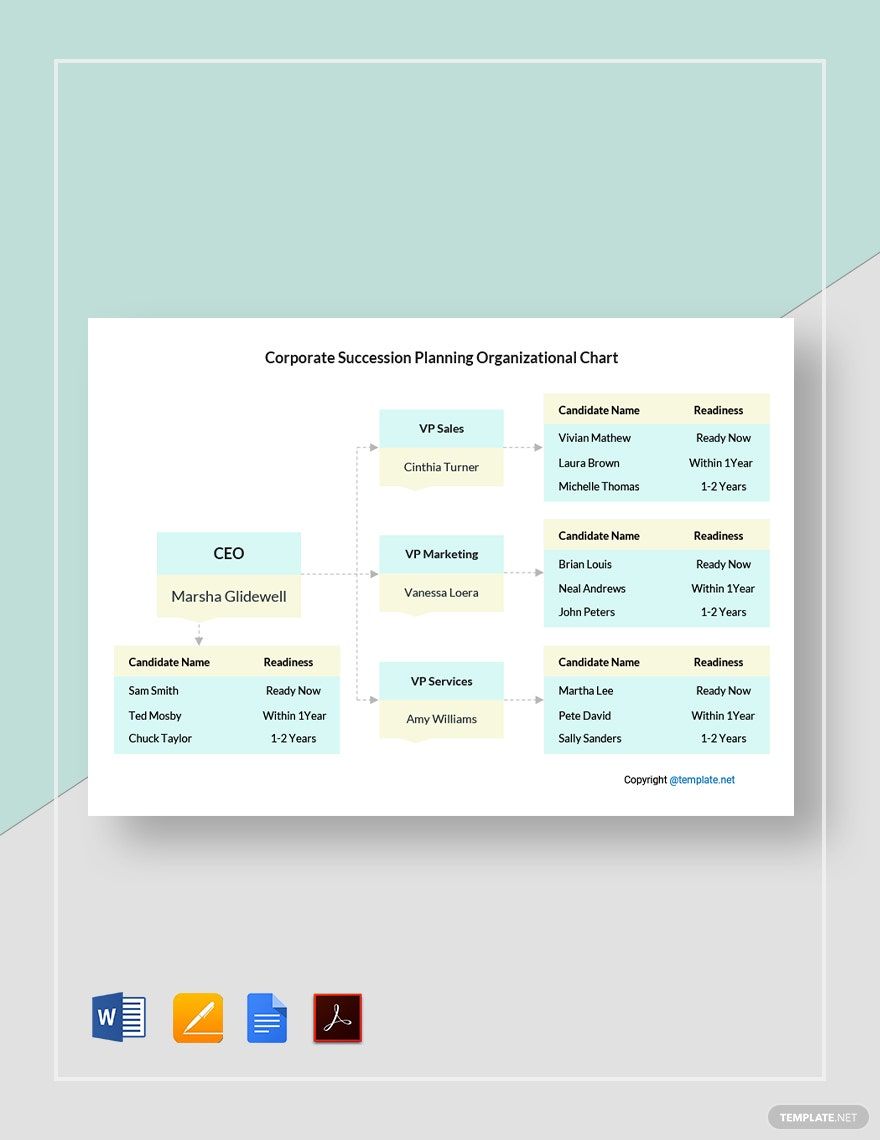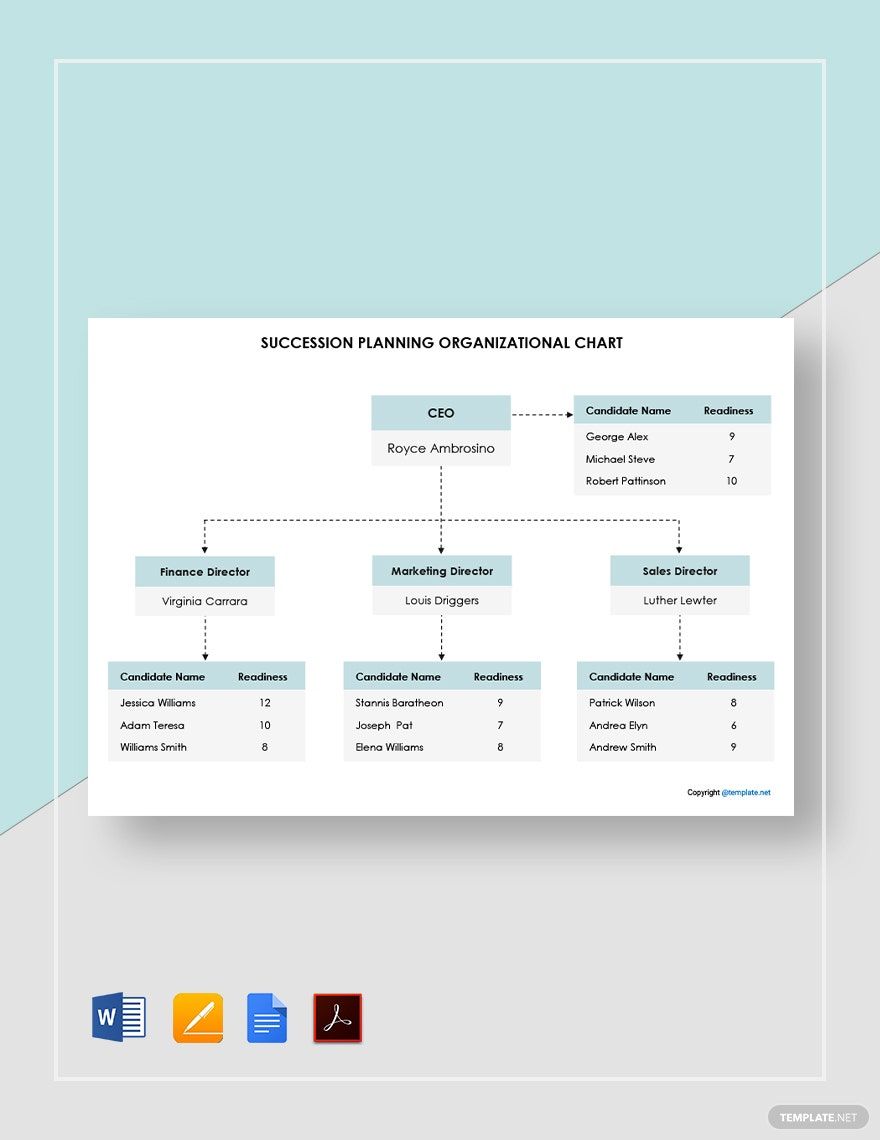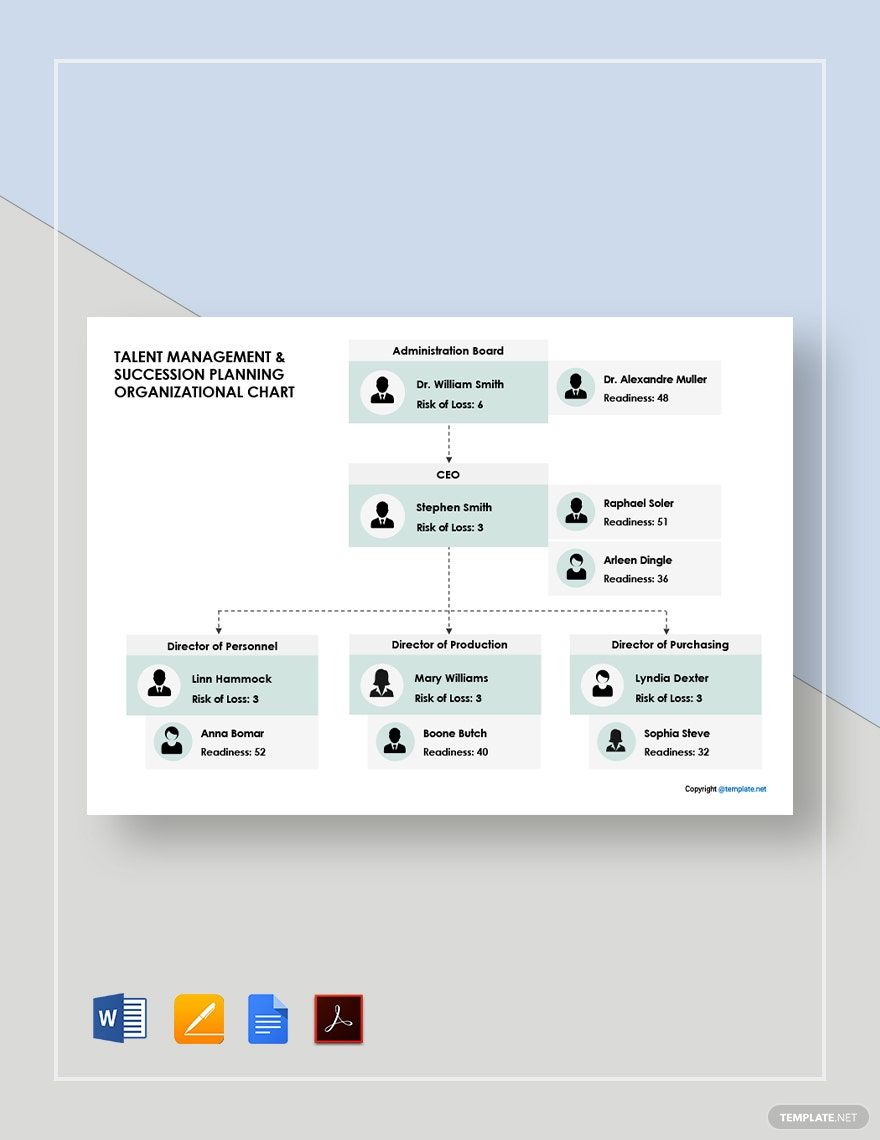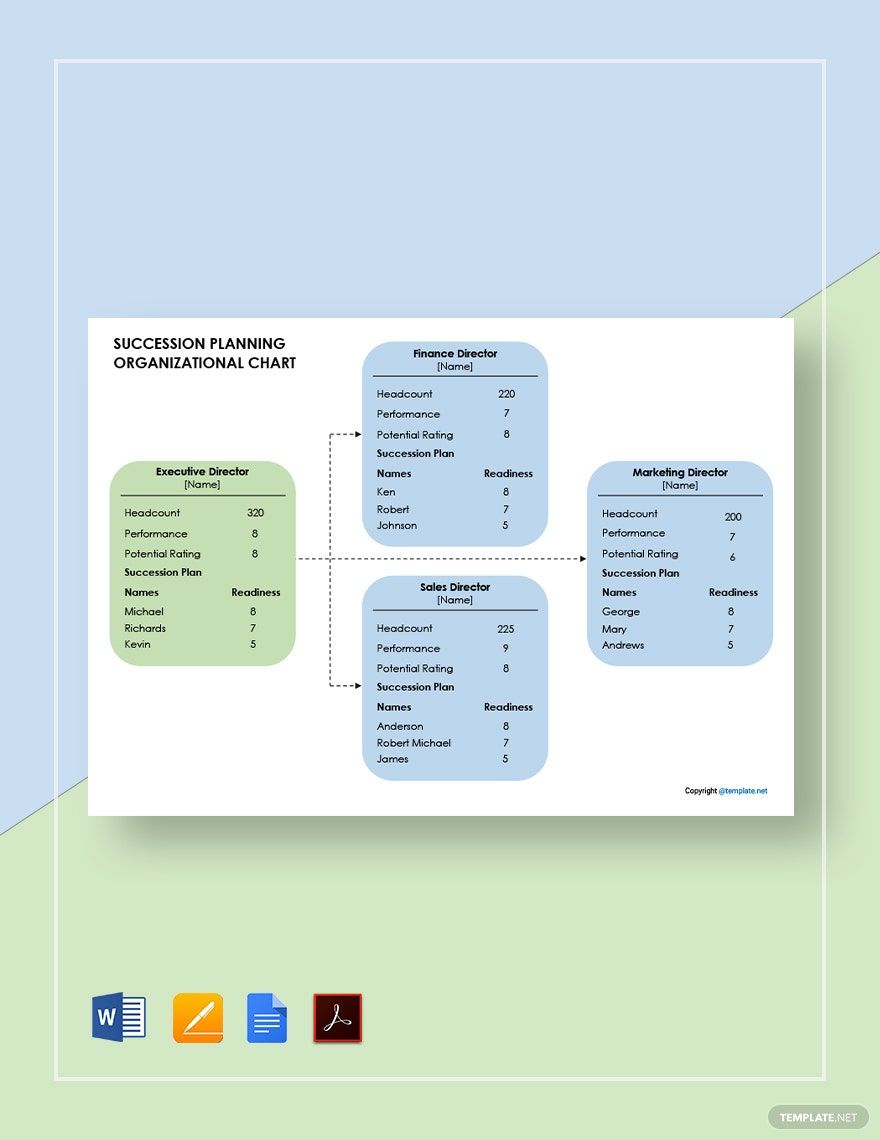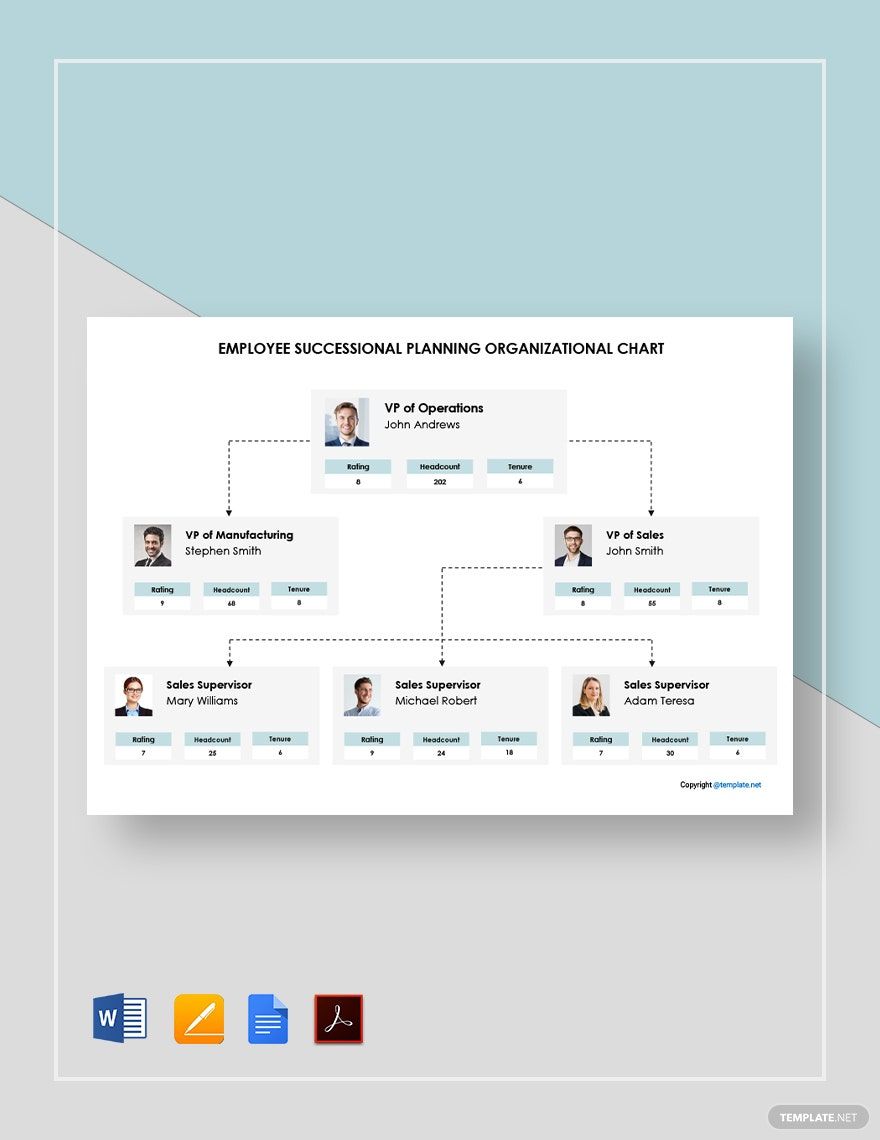Leaders keep everything in check. Politicians carry on the state’s peace and order, and the board of directors runs business empires. However, they cannot be in these critical positions infinitely. Sooner or later they will be needing replacements. This is why a succession plan is vital for every organization. To keep your business running smoothly by the right authorities, we have various Succession Planning Organization Templates in Pages to help you out. These high-quality templates are professionally designed for your Apple (MAC) devices—easily editable, and available in different printed sizes. Download these, and you will never have to worry again about your empire’s growth and stability.
Succession Planning Organizational Chart Template in Apple Pages, Imac
Create Succession Hierarchy Structures Without Hassles with Template.net's Free Succession Planning Organizational Chart Apple Pages Templates! Strategize Leadership Development by Keeping Your Chart Up-To-Date. You Can Edit the Text, Talents and Key Roles, and More with These Samples. Also, Check Out Our Genealogy or Family Tree Templates, Calendar Templates, and Flowchart Template Google Docs, Keynotes, and Microsoft Word!
What is a Succession Planning Organizational Chart?
Succession planning is a blueprint of passing on leadership positions, according to Investopedia. It is the process that management undergoes when looking for potential replacements for important roles. The organizational chart, on the other hand, is an infographic that has features the hierarchy of employees in a company. Therefore, a succession planning organizational chart is a visual tool used by businessmen and HR leaders. It contains names and skills of employees that are considered to fill up higher seats in the organization when they go vacant.
How to Make a Succession Planning Organizational Chart in Pages
Whether you are running a family business, corporation, or talent management, the strategic tips below will help you come up with an efficient succession planning organizational chart.
1. Plan Before a Resignation Occurs
A planned retirement will let you know in advance when a specific role should end. However, companies can never expect when someone resigns from a particular post. That is why your company has to be proactive with your succession plan by bearing in mind that a disorienting resignation is inevitable.
2. Choose Team Members with High Potential
You can’t entirely rely on the fact that those who are directly under the person who resigned is the perfect replacement. Therefore, consider other employees who also have the skills and satisfactory performances to thrive in more responsible roles.
3. Inform Them of the Possibilities
Just because a person wants the position, doesn’t mean they’ll get it. It is still best to talk to these potential candidates and see if your plans fit their career goals. People have diverse priorities, and higher roles may not be suitable for them at the time being. During private meetings, explain to them the benefits of the potential offer. However, let them understand that there are other candidates for the role, too. Be clear that there is no guarantee that they will get the job in the end because of continuous assessment of the candidates’ performance.
4. Invest in Professional Development
Aside from continuous training and seminars, let employees participate in the rotation of jobs. This will enable them to experience and realize other job options. Additionally, they will also possibly discover more favorable roles more suitable for their skills within the company.
5. Value These Possible Successors
Once you choose candidates to succeed in critical roles, assess how they will someday also take over higher positions. Are they capable of sitting in this new post? Do they have outstanding potential to do so? When they become chosen in the future, can they continue to move up the ladder? These are the questions your company should consider before a promotion can push through.
Frequently Asked Questions
What makes succession plans fail?
There is a chance that a succession plan fails when the replacement you’ve chosen for the role isn’t as competent as he should be. When this occurs, this doesn’t ensure growth for the company.
When is the perfect time to use a succession plan?
Apart from when the resignation of an important individual occurs, using a succession plan should be considered when you feel that the business is slowly failing and sales are getting low.
Do succession plans have disadvantages too?
Yes, there are disadvantages to succession plans. Some potential employees can get unnoticed, resulting in the promotion of candidates who may not be as skilled.
How does a succession plan benefit the chosen employees?
Succession plans give the company long-term stability which is healthy for its employees’ careers. It also develops self-esteem by pointing out the leadership traits that these employees possess.
What are the components of an effective succession planning organizational chart?
The components of an effective succession planning organizational chart include:
1. Name
2. Skills
3. Abilities
4. Career goals
5. Progress of his compatibility to the role
